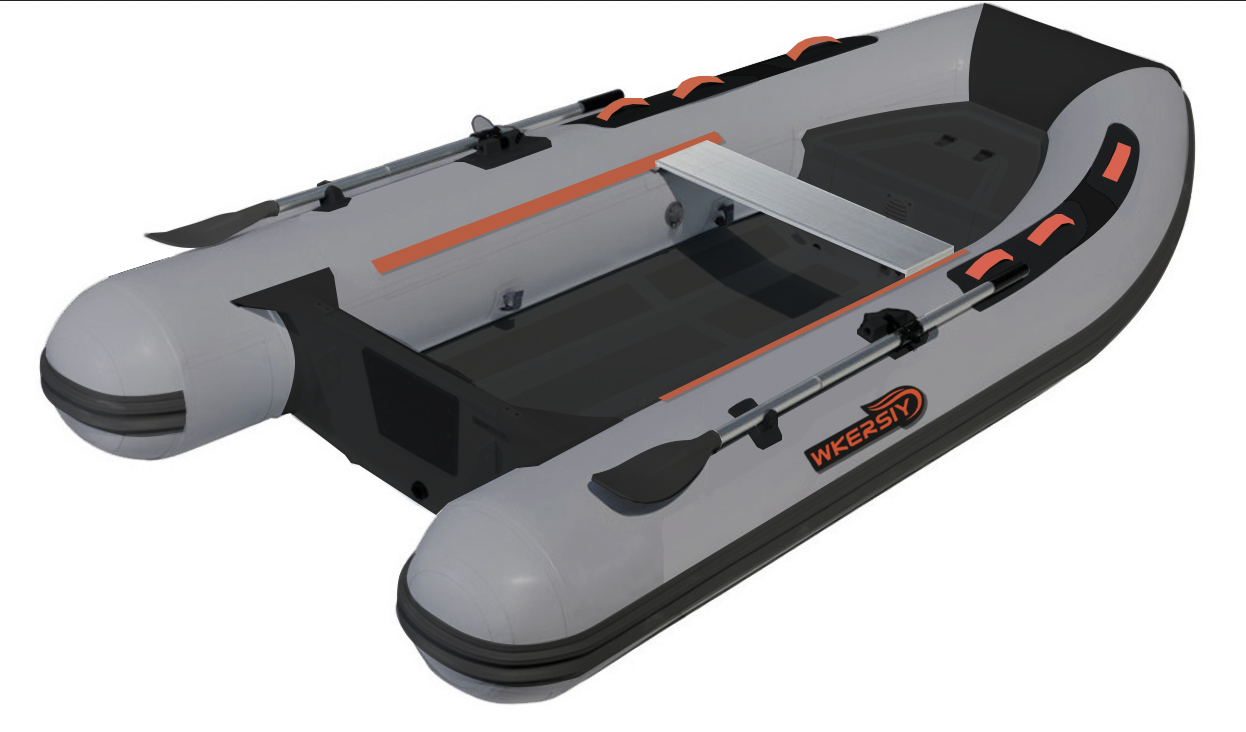
What Are the Materials Used for Inflatable Boat Bottoms? Aluminum Alloy Plate, SLAT Floor, and Drop-Stitch Material
The material of an inflatable boat’s bottom is typically chosen based on factors such as intended use, portability, durability, and cost. The materials you mentioned—aluminum alloy plate, SLAT floor (also known as a hard floor or slatted floor), and drop-stitch material (i.e., high-pressure inflatable floor, often called Drop-Stitch)—are indeed common types of inflatable boat bottoms found on the market today. Below are their characteristics:
1. Aluminum Alloy Plate (Aluminum Floor)
Structural Features: Composed of multiple detachable aluminum alloy plates, usually lightweight aluminum sheets with anti-slip patterns.
Advantages:
- High rigidity and good stability;
- Wear-resistant and puncture-resistant;
- Suitable for high-speed navigation and larger horsepower outboard motors;
- Comfortable to walk on with strong support.
Disadvantages:
- Installation and disassembly are relatively cumbersome;
- Heavier weight, not conducive to frequent transportation;
- Higher cost;
- Long-term use may lead to metal fatigue or deformation.
Commonly used in medium to large inflatable boats or professional rescue boats.
2. SLAT Floor (Hard Floor / Plywood or Composite Slat Floor)
Structural Features: Made of multiple transverse slats of plywood, high-density plastic, or composite materials, placed at the bottom of the inflatable chamber.
Advantages:
- More stable than a purely inflatable floor;
- Lower cost;
- Relatively simple installation;
- Suitable for small to medium-sized inflatable boats.
Disadvantages:
- Rigidity is inferior to a full aluminum alloy floor;
- Slats may absorb moisture and deform over time, especially wooden ones;
- The surface is less even than aluminum, making walking slightly less comfortable;
- Requires regular maintenance (e.g., waterproof treatment).
Commonly found in economical or recreational inflatable boats.
3. Drop-Stitch Material (High-Pressure Air Floor)
Structural Features: Utilizes “drop-stitch” technology (where millions of polyester fibers vertically connect the upper and lower layers of PVC-coated fabric), forming a rigid surface similar to a hard floor when inflated.
Advantages:
- Can be fully deflated and folded, offering excellent portability;
- Hardness when inflated is close to that of a hard floor, providing good stability;
- No assembly required, easy to use;
- Corrosion-resistant, non-absorbent, and maintenance-free.
Disadvantages:
- Cost is higher than traditional SLAT floors;
- If punctured by sharp objects, repairs are more complex;
- Weight capacity limit is lower than metal floors (but sufficient for general recreational use).
Widely used in high-end portable inflatable boats, fishing boats, kayaks, etc.
Summary Comparison Table:
| Type | Rigidity | Portability | Durability | Installation Difficulty | Suitable Scenarios |
|---|---|---|---|---|---|
| Aluminum Alloy Plate | ★★★★☆ | ★★★☆☆ | ★★★★☆ | ★★★☆☆ | High-speed, Professional, Large horsepower |
| SLAT Floor | ★★★☆☆ | ★★★☆☆ | ★★★☆☆ | ★★★☆☆ | Recreational, Economical |
| Drop-Stitch Material | ★★★★☆ | ★★★★☆ | ★★★★☆ | ★★★★☆ | Portable, Fishing, Travel |
